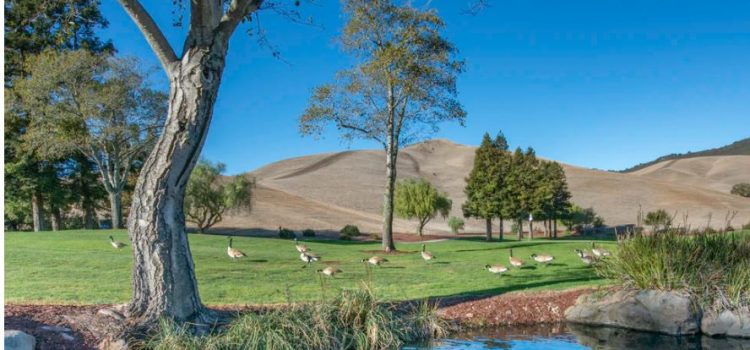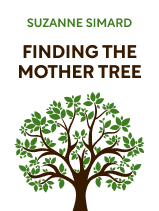

This article is an excerpt from the Shortform book guide to "Finding the Mother Tree" by Suzanne Simard. Shortform has the world's best summaries and analyses of books you should be reading.
Like this article? Sign up for a free trial here.
What are some quotes from Finding the Mother Tree? What can you learn from these quotes?
In Finding the Mother Tree, ecologist Suzanne Simard explains her decades-long research on the relationships among trees in the forests of British Columbia. Simard shows the major dynamic among plant life in forests is cooperation and interdependence.
Let’s look at three Finding the Mother Tree quotes that support her theory.
Finding the Mother Tree Quotes
Are trees competitive or cooperative? In Finding the Mother Tree, ecologist Suzanne Simard delves into this question. Scientists and foresters have typically thought of trees as competing for water, sunlight, and nutrients, and they’ve favored growing marketable species while eliminating presumed competitors. However, Suzanne Simard says that trees are connected.
Below we’ll look at three Finding the Mother Tree quotes with explanations.
“Plants are attuned to one another’s strengths and weaknesses, elegantly giving and taking to attain exquisite balance. There is grace in complexity, in actions cohering, in sum totals.”
Of course, there are more than just trees and fungi in a forest; a forest is a complex ecosystem of diverse flora and fauna. Simard says we can think of the larger forest ecosystems as similar to human societies. They’re complex, self-organizing, and adaptive. And, importantly, she says they are intelligent.
Because ecosystems operate similarly to human societies, this could explain why we find a prevailing paradigm of competition in the modern scientific worldview and a paradigm of cooperation in the traditional indigenous worldview. Each paradigm is modeled after the society within which it develops.
Simard points out that objectifying nature, thinking of humans as separate from it (and even above it) is a modern Western construct and reflective of a colonialist mindset. First Nations tribes of the region had a symbiotic relationship with the land and existed entirely within these forest ecological communities, rather than viewing them from the outside. She ties all of this into the pressing issue of climate change.
“I’d learned to deal with conflict by running from it. I was terrible at standing my ground, never mind giving talks.”
Although Simard is now considered a leading expert in forest ecology and has received widespread acclaim for her work, she fought a long battle to get there. Her earlier research wasn’t positively received and was often outright rejected. So how did she go from being maligned and rejected to a respected world expert?
She began her work as a 20-year-old working for a logging company in 1980. She was tasked with finding out why many of the seedling trees the company had planted were not thriving. The company followed the typical industry practice of clear-cutting large areas of the forest, removing all brush, and then planting seedling trees of a single variety in rows. The prevailing theory was that removing natural “competitors” would allow the cultivated trees to grow more successfully.
After comparing the withering tree plantations with the neighboring wild areas that were thriving, Simard had a hunch that the problem was that the seedlings were planted in ways they wouldn’t naturally grow—trees in a forest don’t grow in a monoculture (a single species growing alone). This prompted Simard’s initial thought that the forests might be more cooperative than competitive.
However, when she proposed these ideas to her coworkers and supervisors, she faced stiff resistance and opposition. She continued to pursue these questions after moving on to the Forest Service and later academia, but she was routinely ignored (or ridiculed and mocked) for her ideas. Her research articles were rejected by scientific journals, and attendees walked out on her conference presentations. As Simard explains, this reaction was undoubtedly heightened by the fact that she was a young woman working in a male-dominated field. She would have to fight to be heard throughout her career, but she persisted in the face of constant opposition.
“We can continue pushing our earth out of balance, with greenhouse gases accelerating each year, or we can regain balance by acknowledging that if we harm one species, one forest, one lake, this ripples through the entire complex web. Mistreatment of one species is mistreatment of all.”
While Simard’s ideas have caught the public imagination, they’ve been resisted by the forestry establishment, as they challenge the long-held dominant paradigm of forests as spaces of competition. Simard argues that this paradigm must change if we are to have healthy forests and sustainable practices. She says it’s crucial to recognize the cooperation and interdependence that happens in forests because the long-term health of those forests depends on those relationships.
The theory that clear-cutting destroys the natural relationships between trees has been a sticking point with people who believe trees having relationships is an idealistic “hippie” notion, as Simard says her perspective has often been characterized.

———End of Preview———
Like what you just read? Read the rest of the world's best book summary and analysis of Suzanne Simard's "Finding the Mother Tree" at Shortform.
Here's what you'll find in our full Finding the Mother Tree summary:
- A look at Suzanne Simard's research on the relationships among trees
- What a Mother Tree is, and how it takes care of its community
- How trees communicate in an interconnected, underground network







what page number is this quote from? and a proper citation of the book?